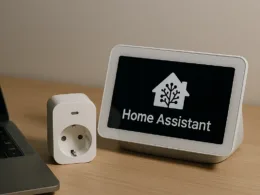Introduction
Linux system administration requires a deep understanding of the operating system and the various tools available to manage it effectively. In this article, we will explore advanced tips and tricks to enhance your Linux administration skills, ensuring your systems are secure, efficient, and well-maintained.
Optimising System Performance
1. Monitoring System Resources
Utilise tools like htop and glances to monitor system resources in real-time. These tools provide a more interactive and user-friendly interface compared to traditional top.
sudo apt install htop glances
htop
glances2. Managing Processes
Understanding how to manage processes is crucial. Use nice and renice to adjust process priorities and kill to terminate unresponsive processes.
# To start a process with a lower priority
nice -n 10 command
# To change the priority of an existing process
renice 10 -p PID
# To kill an unresponsive process
kill -9 PID3. Disk Usage Analysis
Tools like ncdu and du are invaluable for analysing disk usage and identifying large files or directories.
sudo apt install ncdu
ncdu /Enhancing Security
1. Regular System Updates
Keeping your system updated is a fundamental security practice. Use apt to ensure all packages are up-to-date.
sudo apt update
sudo apt upgrade -y2. Configuring Firewalls
Use ufw (Uncomplicated Firewall) to manage firewall rules and protect your system from unwanted access.
sudo apt install ufw
sudo ufw enable
sudo ufw allow ssh
sudo ufw status3. Secure SSH Configuration
Enhance SSH security by disabling root login and using key-based authentication.
# Edit the SSH configuration file
sudo nano /etc/ssh/sshd_config
# Disable root login
PermitRootLogin no
# Enable key-based authentication
PasswordAuthentication no
# Restart SSH service
sudo systemctl restart ssh
Automation and Scripting
1. Automating Tasks with Cron
Use cron to schedule and automate routine tasks. Edit the crontab file to add new scheduled tasks.
crontab -e
# Example cron job to run a script every day at midnight
0 0 * * * /path/to/script.sh
2. Writing Efficient Shell Scripts
Shell scripting can automate complex tasks. Ensure your scripts are efficient, well-documented, and error-checked.
#!/bin/bash
# Example script to backup a directory
SOURCE="/path/to/source"
DEST="/path/to/destination"
LOGFILE="/path/to/logfile.log"
tar -czf ${DEST}/backup-$(date +%F).tar.gz ${SOURCE} &>> ${LOGFILE}
System Backup and Recovery
1. Backup Strategies
Implement regular backup strategies using tools like rsync and tar. Ensure backups are stored securely and tested regularly.
# Using rsync for incremental backups
rsync -av --delete /source/directory/ /backup/directory/
2. Recovery Plans
Prepare for disaster recovery by having a tested recovery plan. Regularly test your backups and ensure you can restore them quickly when needed.
Conclusion
A combination of monitoring, security, automation and backup strategies should hel keep linux systems secure, efficient and well maintained.
Feel free to reach out or leave a comment.










